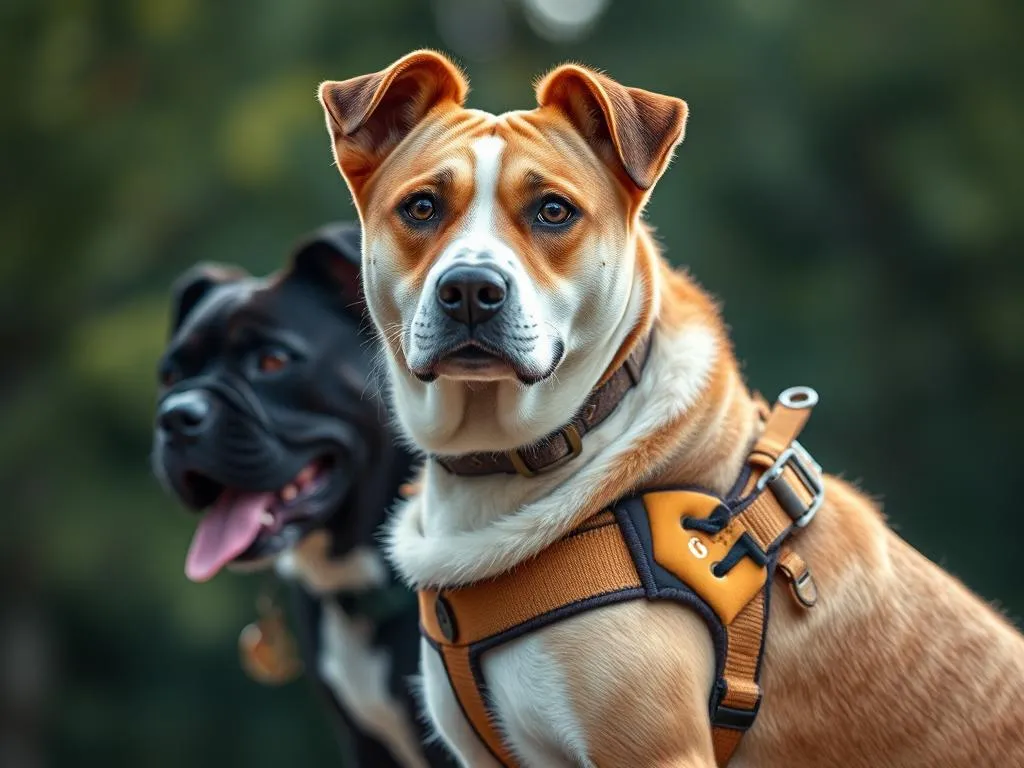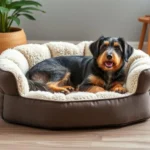
Choosing the right harness for your large dog is crucial for ensuring comfort, safety, and control during walks. While collars can serve their purpose, harnesses are often the better choice for larger breeds due to their ability to distribute pressure more evenly across the dog’s body. This can help prevent injuries to the neck and spine, especially in strong dogs that tend to pull. For dog owners with large breeds or new pet parents looking for guidance, understanding the landscape of harness options is essential.
Understanding Large Dog Breeds
Large dogs are defined as breeds that typically weigh between 50 and 100 pounds. They are often characterized by their strength, energy, and sometimes stubbornness. Popular large dog breeds include:
- Labrador Retriever: Friendly and energetic, Labradors are known for their love of outdoor activities.
- German Shepherd: Intelligent and versatile, German Shepherds often require structured training and exercise.
- Golden Retriever: Known for their friendly disposition, Golden Retrievers are active dogs that thrive on companionship and activity.
These breeds often exhibit high energy levels and require proper control during walks to ensure their safety and the safety of others. A well-fitted harness can provide better control over your large dog, which is essential for enjoyable walks.
Types of Dog Harnesses
When selecting a harness for your large dog, it’s important to understand the different types available. Here are the most common types:
Standard Harnesses
A standard harness typically features a simple design with straps that loop around the dog’s body. They are easy to put on and take off, making them a good choice for everyday use.
Pros:
– Comfortable for the dog
– Simple design
– Good for casual walks
Cons:
– May not prevent pulling effectively
No-Pull Harnesses
No-pull harnesses are designed to discourage pulling by redirecting the dog’s movement. They often have a front clip that attaches the leash at the chest, which helps to steer the dog back toward you when they pull.
Benefits:
– Reduces pulling behavior
– Helps with training
– Provides better control
Vest Harnesses
Vest harnesses cover more surface area and distribute pressure evenly across the dog’s chest and back. They often provide additional comfort and support, making them ideal for long walks or hikes.
Best Use Scenarios:
– For dogs that pull
– Dogs with sensitive skin
– Long periods of wear
Front-Clip vs. Back-Clip Harnesses
Harnesses come in two main designs: front-clip and back-clip.
Front-Clip Harnesses:
– Attach the leash to the chest.
– Help prevent pulling by redirecting the dog’s movement.
Back-Clip Harnesses:
– Attach the leash to the back.
– Easier to put on and better for dogs that don’t pull.
The choice between front-clip and back-clip will depend on your dog’s behavior and your training goals.
Key Features to Consider
When searching for the best harnesses for large dogs, consider the following features:
Size and Fit
Getting the right size and fit is paramount. A harness that is too loose can slip off, while one that is too tight can cause discomfort.
Tips for measuring your dog:
1. Measure around the widest part of the chest.
2. Measure the neck circumference.
3. Consult the manufacturer’s sizing chart before purchasing.
Material and Durability
Harnesses are made from various materials, including nylon, polyester, and neoprene. Look for durable, weather-resistant materials that can withstand the wear and tear of daily use.
Common Materials:
– Nylon: Lightweight and durable.
– Polyester: Resistant to fading and typically more affordable.
– Neoprene: Soft and comfortable, often used for padding.
Adjustability
Adjustability is crucial for a comfortable fit, especially as dogs grow or if they have varying fur thickness due to seasonal changes. Look for harnesses with multiple adjustable points.
Ease of Use
A harness should be easy to put on and take off. Look for models with quick-release buckles that allow for hassle-free access.
Safety Features
Safety features can enhance visibility and security during walks. Consider harnesses with:
– Reflective materials for nighttime walks.
– Reinforced stitching to prevent wear.
– Secure buckles that won’t accidentally unclip.
Top Recommended Harnesses for Large Dogs
When it comes to finding the best harnesses for large dogs, here are some top recommendations:
Product 1: Kurgo Tru-Fit Smart Harness
Description: This harness is designed for maximum comfort and safety. It features a padded chest plate and a no-pull design.
Pros:
– Adjustable fit
– Crash-tested for car safety
– Includes a back and front clip
Cons:
– May be too bulky for some dogs
Pricing: Approximately $45. Available at major pet retailers.
Product 2: PetSafe Easy Walk Harness
Description: This no-pull harness is designed to discourage pulling and offers a comfortable fit.
Pros:
– Front-clip design
– Easy to put on and take off
– Available in multiple sizes
Cons:
– Limited color options
Pricing: Approximately $30. Available on Amazon and pet specialty stores.
Product 3: Ruffwear Front Range Harness
Description: This harness is both functional and stylish, featuring a padded chest and belly for comfort.
Pros:
– Reflective trim for visibility
– Two leash attachment points
– Durable construction
Cons:
– Higher price point
Pricing: Approximately $55. Available at outdoor and pet supply retailers.
Product 4: Blue-9 Balance Harness
Description: Known for its adjustability and comfort, this harness is perfect for training large dogs.
Pros:
– Multiple adjustment points
– Encourages natural movement
– Lightweight design
Cons:
– May require some adjustment to fit properly
Pricing: Approximately $40. Available online and at select pet stores.
Product 5: Chai’s Choice 3M Reflective Dog Harness
Description: This harness is designed for nighttime visibility, making it perfect for evening walks.
Pros:
– Highly reflective for safety
– Comfortable padding
– Adjustable straps
Cons:
– Limited color choices
Pricing: Approximately $30. Available on Amazon and pet supply websites.
Tips for Training Your Dog with a Harness
Getting your dog accustomed to a harness may take some time and patience. Here’s a step-by-step guide to help you acclimate your dog:
Getting Your Dog Used to the Harness
- Introduce the harness: Let your dog sniff and explore the harness before putting it on.
- Positive association: Give treats when they show interest in the harness.
- Put it on for short periods: Start by placing the harness on your dog for just a few minutes at a time.
- Gradually increase wear time: Slowly extend the time your dog wears the harness until they are comfortable with it.
Using Positive Reinforcement
Reward your dog with treats and praise when they wear the harness. It’s essential to create a positive association with the harness so that they view it as a comfortable accessory rather than a restriction.
Practicing Leash Manners
Once your dog is comfortable wearing the harness, practice leash manners. Here are some techniques to help:
- Start in a quiet area: Begin training in a distraction-free environment.
- Use short walks: Keep initial walks brief to avoid overwhelming your dog.
- Encourage good behavior: Reward your dog when they walk calmly beside you.
- Redirect pulling: If they pull, stop walking and wait until they return to your side before continuing.
Conclusion
Selecting the best harness for large dogs is essential for ensuring both comfort and safety during walks. With various types and features available, it’s crucial to consider your dog’s specific needs and behaviors. By understanding the characteristics of large dog breeds and the importance of proper control, you can make an informed choice that enhances your walking experience.
Whether you opt for a no-pull harness or a comfortable vest-style design, the right harness can make a world of difference in your daily outings. Take the time to explore the options available and consider your dog’s unique requirements to find the perfect fit.









